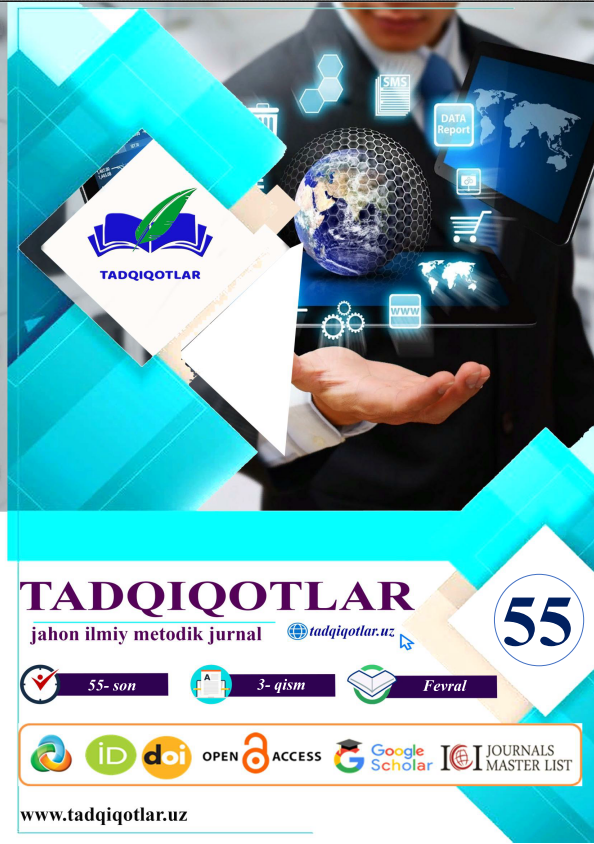INFORMATION TECHNOLOGIES IN ENDOCRINOLOGY: ENHANCING DIAGNOSIS, TREATMENT, AND PATIENT MANAGEMENT
Keywords:
Keywords: Information Technologies, Endocrinology, Artificial Intelligence, Personalized Medicine, Diabetes, Thyroid Disorders, Telemedicine, Electronic Health Records, Big Data, Patient Management, Endocrine DisordersAbstract
Abstract. Information technologies (IT) have significantly transformed the field
of endocrinology by enhancing diagnostic accuracy, personalizing treatment plans, and
improving patient management. The integration of AI, big data, electronic health
records (EHRs), and telemedicine has revolutionized the way endocrinologists
diagnose and treat endocrine disorders such as diabetes, thyroid diseases, and
metabolic disorders. This article explores the role of information technologies in
endocrinology, emphasizing their impact on diagnostics, treatment personalization,
and remote patient management. It also discusses the challenges and ethical
considerations related to data security and AI usage. As IT continues to evolve, its
integration into endocrinology is expected to improve patient outcomes and foster more
efficient and personalized healthcare.
References
REFERENCES:
1. Dastgir, A., & Sharma, S. (2020). The role of artificial intelligence in
endocrinology: A review of applications in diabetes and thyroid disorders. Journal
of Endocrinology and Metabolism, 35(4), 225-238.
2. Zhang, L., & Li, T. (2021). Big data analytics and its impact on personalized
medicine in endocrinology. Endocrinology Research and Reviews, 22(2), 85-92.
3. Kumar, R., & Singh, P. (2022). Telemedicine in endocrine care: Current
perspectives and future directions. Journal of Telemedicine and Telecare, 28(3),
151-162.
4. White, A. A., & Lopez, E. (2019). Enhancing diabetes management with artificial
intelligence. International Journal of Diabetes and Endocrinology, 18(1), 34-42.
5. ISMANOVA, A. (2024). YOSHLARGA OID DAVLAT SIYOSATINI AMALGA
OSHIRISHNING PEDAGOGIK TAHLILI. News of UzMU journal, 1(1.4), 104-
108.
6. Mukhammadjonovich, R. M., Abdulkhamidovna, I. A., Abdumukhtorovich, G. S.,
Abdusaitovich, T. O., & Sobirovich, K. S. (2023). Use of new innovative methods
in teaching the science of information technologies and modeling of technological
processes. Journal of Survey in Fisheries Sciences, 10(2S), 1458-1463.
7. Tukhtaeva, N., Ismanova, A., Allamuratova, Z., & Khayitboev, N. (2024,
November). Using mind mapping in teaching computer science. In AIP Conference
Proceedings (Vol. 3244, No. 1). AIP Publishing.Arofat, I. (2016). Social-political
need of fighting with Enlightenment against ideology of religious extremism and
terrorism. European research, (6 (17)), 96-98.
8. Ismanova, A. (2016). The Mechanisms of Influence on the Minds of Young People
and Socio-Educational Prevention. Eastern European Scientific Journal, (3).
9. QOBULOVA, M. (2024). MOSLASHUVCHN ONLAYN O ‘QUV TIZIMLARI
VA ULARDAN TIBBIY TA’LIMDA FOYDALANISH. News of the NUUz,
1(1.9. 1), 107-109.
10. Mengliyev, I., Meylikulov, S., Fayzullayeva, Z., & Kobulova, M. (2024,
November). Education artificial intelligence systems and their use in teaching. In
AIP Conference Proceedings (Vol. 3244, No. 1). AIP Publishing.
11. Ismanova, A. A. (2018). Role of Pedagogical Prevention in Struggle Against
Religious Extremism and Terrorism. Eastern European Scientific Journal, (2).
12. Ismanova, A. A. (2015). EDUCATIONAL AND OTHERS TECHNOLOGIES
FOR THE PREVENTION OF THE STRUGGLE AGAINST RELIGIOUS
EXTREMISM AND TERRORISM. Theoretical & Applied Science, (11), 63-66.
13. Ismanova, A. (2022). UPBRINGING OF HIGHLY EDUCATED YOUNG
PEOPLE IS THE MAIN BASIS FOR PREVENTING RELIGIOUS EXTREMISM
AND TERRORISM. Экономика и социум, (10-2 (101)), 59-62.
14. Кобулова Мохинабону Авазбековна ОСНОВНЫЕ НАПРАВЛЕНИЯ
ИСПОЛЬЗОВАНИЯ КОМПЬЮТЕРНЫХ ТЕХНОЛОГИЙ В АДАПТИВНЫХ
ОНЛАЙН ОБУЧАЮЩИХ СИСТЕМАХ // Universum: психология и
образование. 2024. №10 (124).




